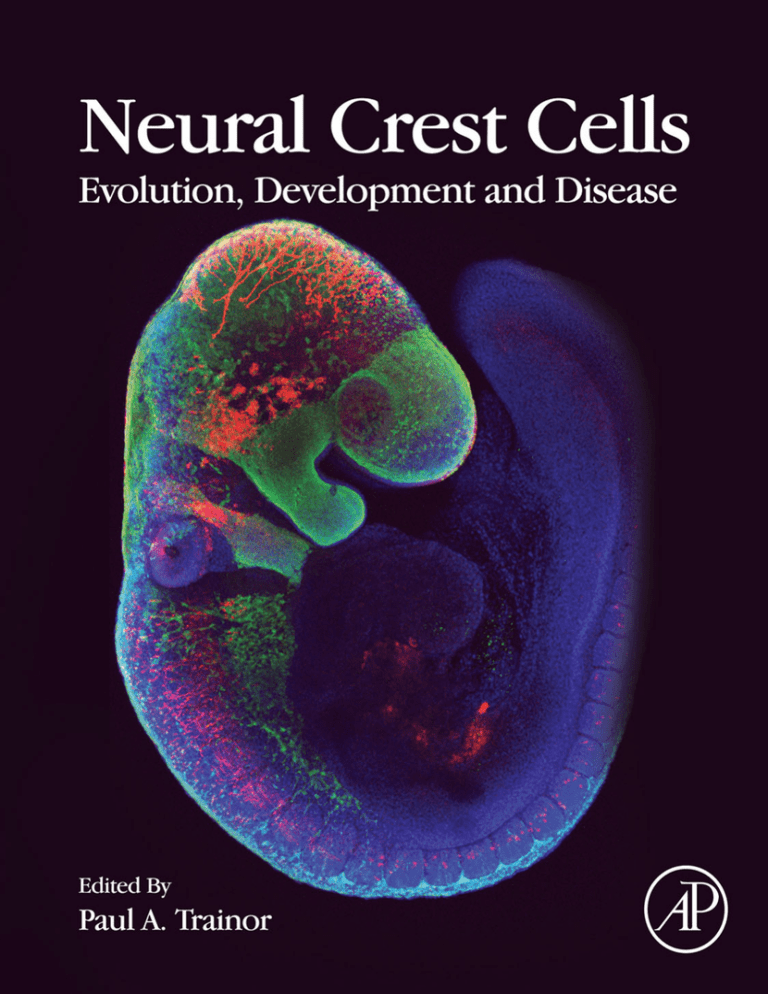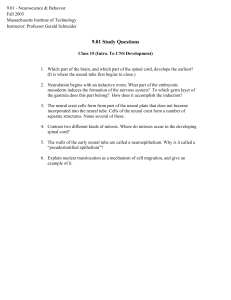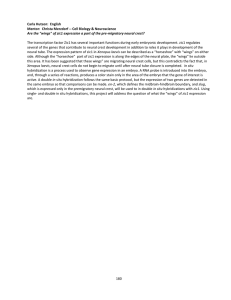Document 13940437
advertisement

C H A P T E R 4 Neural Crest Cell Migration: Guidance, Pathways, and CellCell Interactions Eric Theveneau and Roberto Mayor Department of Cell and Developmental Biology, University College London, UK O U T L I N E Pathways of Neural Crest Cell Migration: An Overview Cephalic Neural Crest Cell Migration Inhibitors Positive Regulators of Cephalic Neural Crest Cell Migration 75 75 Trunk Neural Crest Cell Migration The Ventromedial Pathway The Dorsolateral Pathway 77 77 78 CellCell Interactions During Neural Crest Cell Migration Neural CrestNeural Crest Interactions and Cell Polarity Neural CrestNeural Crest Interactions Promote Collective Guidance CIL-Based Dispersion Is Counterbalanced by Mutual Attraction to Promote Collective Cell Migration Dialogue Between Neural Crest Cells and Their Local Environment 73 76 78 80 81 Conclusion and Perspectives 82 Acknowledgments 83 References 83 78 PATHWAYS OF NEURAL CREST CELL MIGRATION: AN OVERVIEW surrounding tissue by activating an epitheliumto-mesenchyme transition (EMT) program and migrate extensively throughout the embryo [2]. They depart as a continuous cell population, progressively dispersing away from the neuroepithelium, and organize into discrete streams. Along the way toward their target The neural crest cells (NCC) are induced at the interface between the neuroepithelium and the prospective epidermis [1]. Shortly after induction, NCC delaminate from their Neural Crest Cells. DOI: http://dx.doi.org/10.1016/B978-0-12-401730-6.00004-1 80 73 © 2014 Elsevier Inc. All rights reserved.




